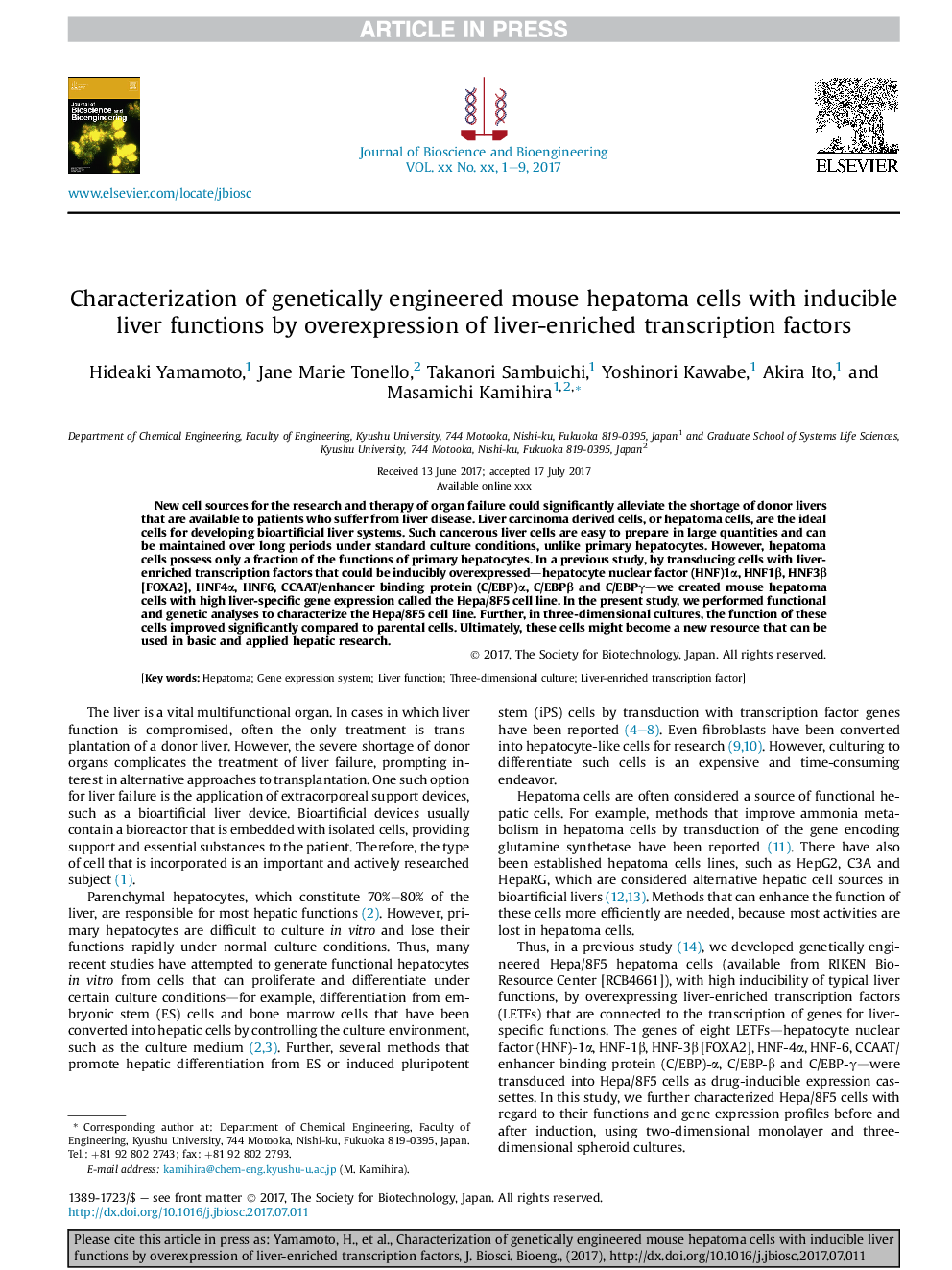| Article ID | Journal | Published Year | Pages | File Type |
|---|---|---|---|---|
| 6490048 | Journal of Bioscience and Bioengineering | 2018 | 9 Pages |
Abstract
New cell sources for the research and therapy of organ failure could significantly alleviate the shortage of donor livers that are available to patients who suffer from liver disease. Liver carcinoma derived cells, or hepatoma cells, are the ideal cells for developing bioartificial liver systems. Such cancerous liver cells are easy to prepare in large quantities and can be maintained over long periods under standard culture conditions, unlike primary hepatocytes. However, hepatoma cells possess only a fraction of the functions of primary hepatocytes. In a previous study, by transducing cells with liver-enriched transcription factors that could be inducibly overexpressed-hepatocyte nuclear factor (HNF)1α, HNF1β, HNF3β [FOXA2], HNF4α, HNF6, CCAAT/enhancer binding protein (C/EBP)α, C/EBPβ and C/EBPγ-we created mouse hepatoma cells with high liver-specific gene expression called the Hepa/8F5 cell line. In the present study, we performed functional and genetic analyses to characterize the Hepa/8F5 cell line. Further, in three-dimensional cultures, the function of these cells improved significantly compared to parental cells. Ultimately, these cells might become a new resource that can be used in basic and applied hepatic research.
Keywords
Related Topics
Physical Sciences and Engineering
Chemical Engineering
Bioengineering
Authors
Hideaki Yamamoto, Jane Marie Tonello, Takanori Sambuichi, Yoshinori Kawabe, Akira Ito, Masamichi Kamihira,
